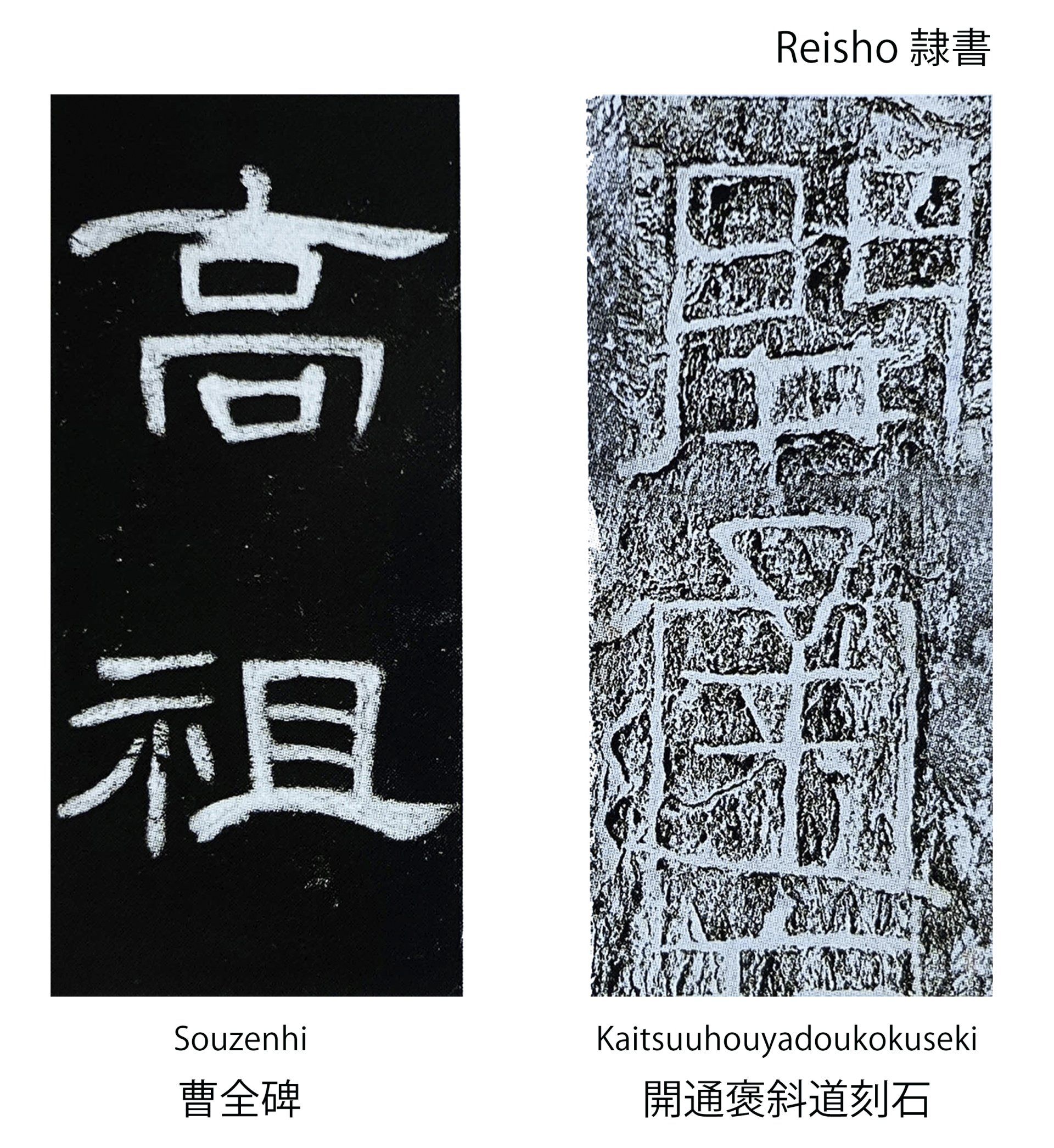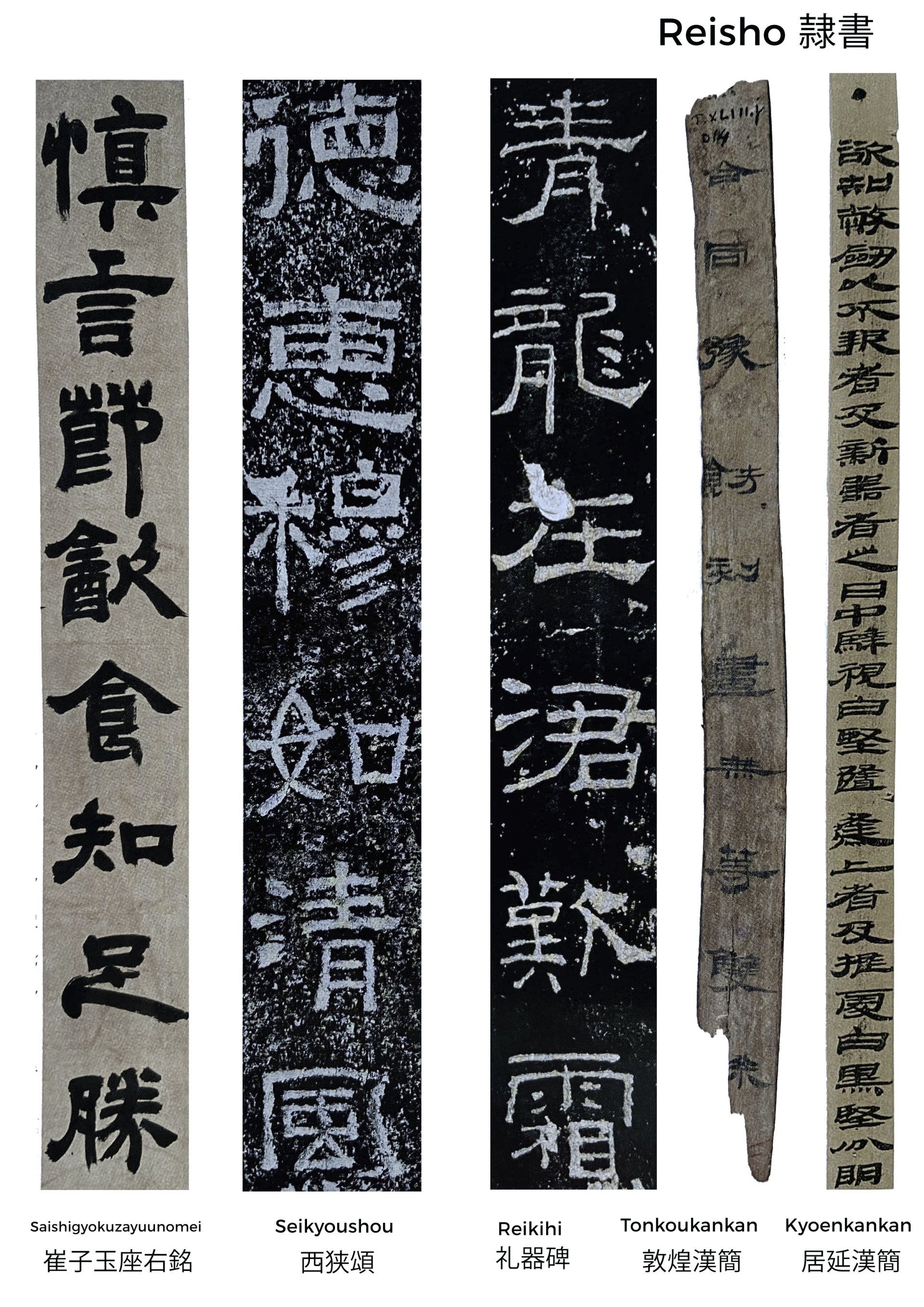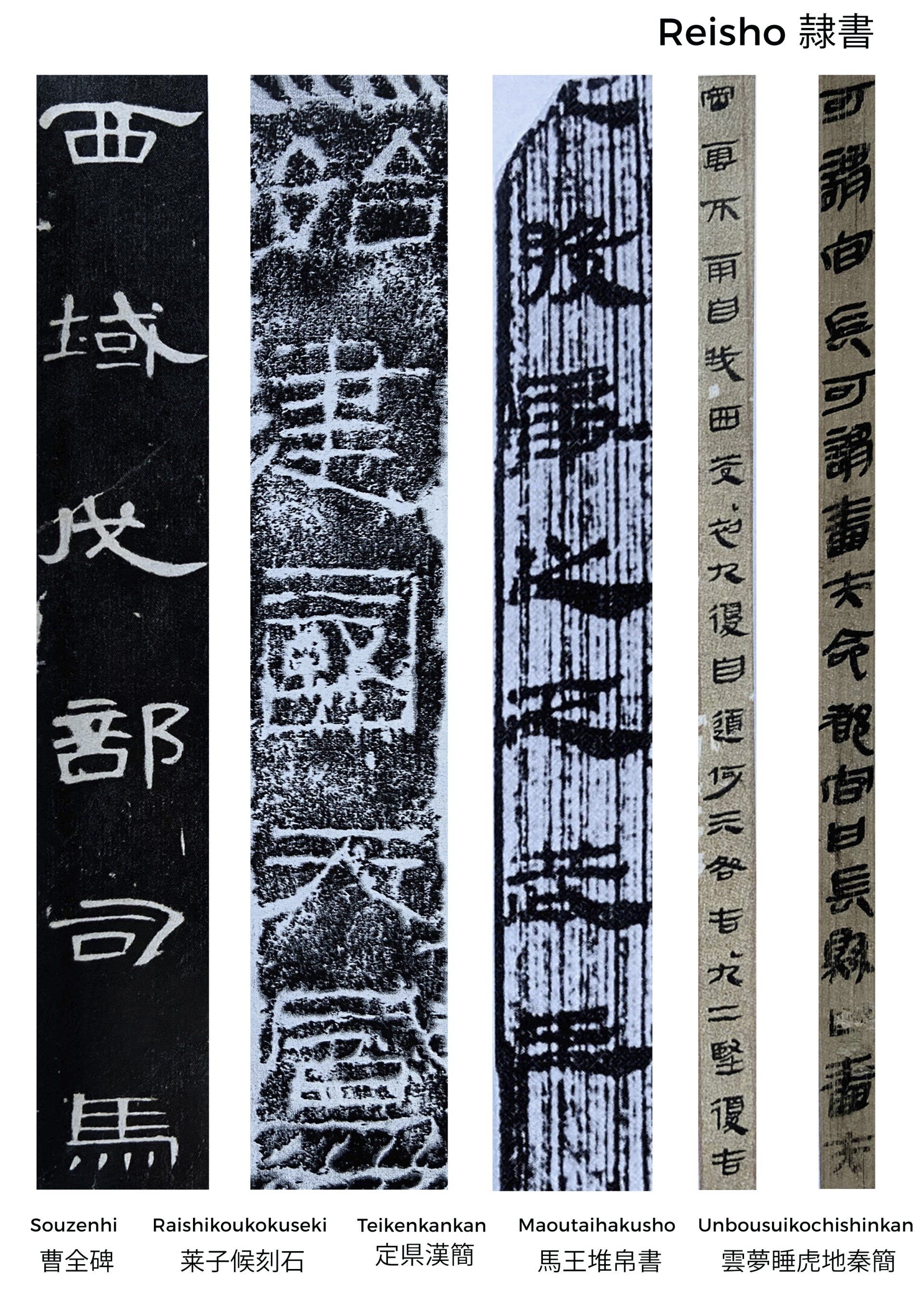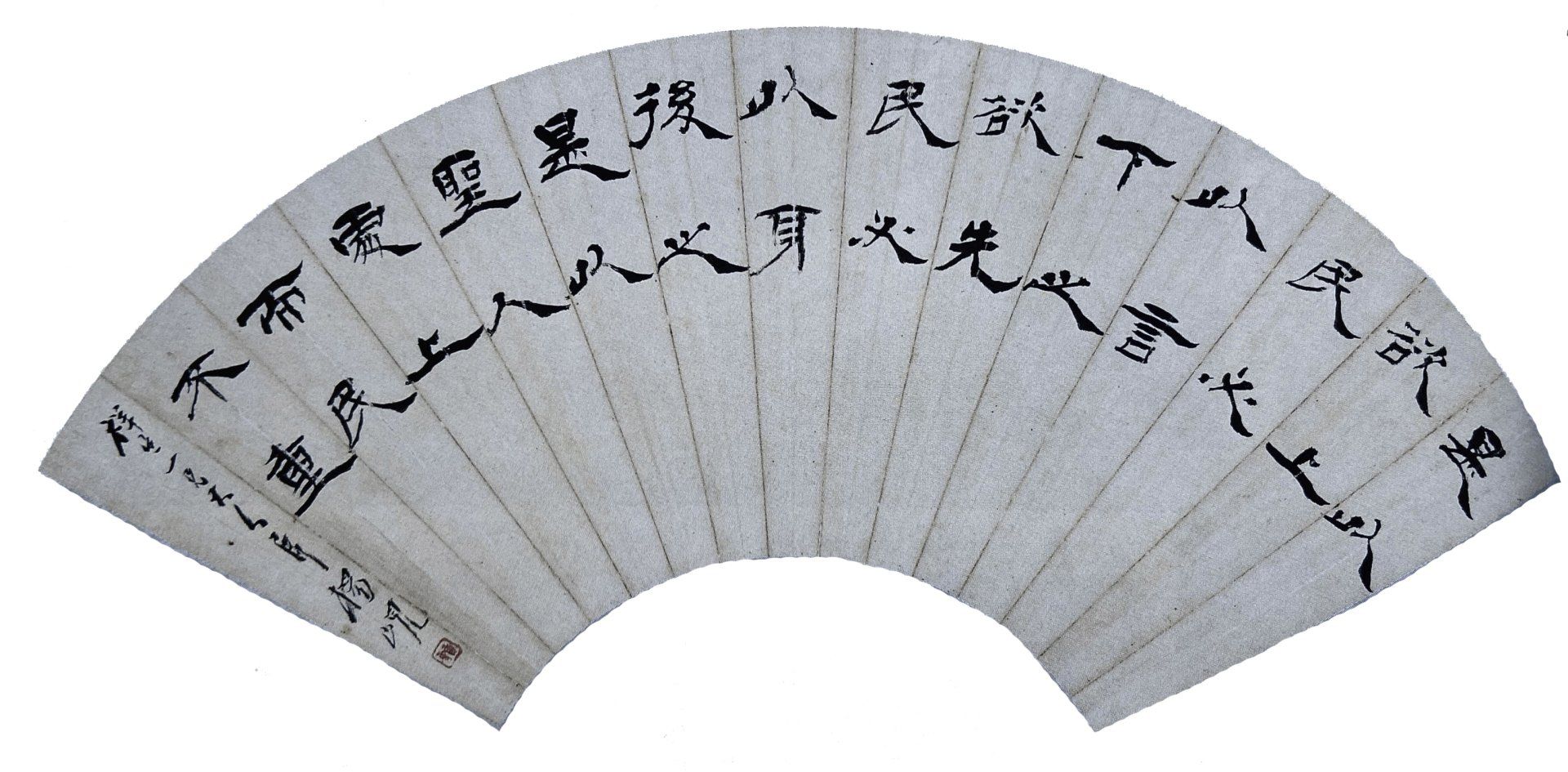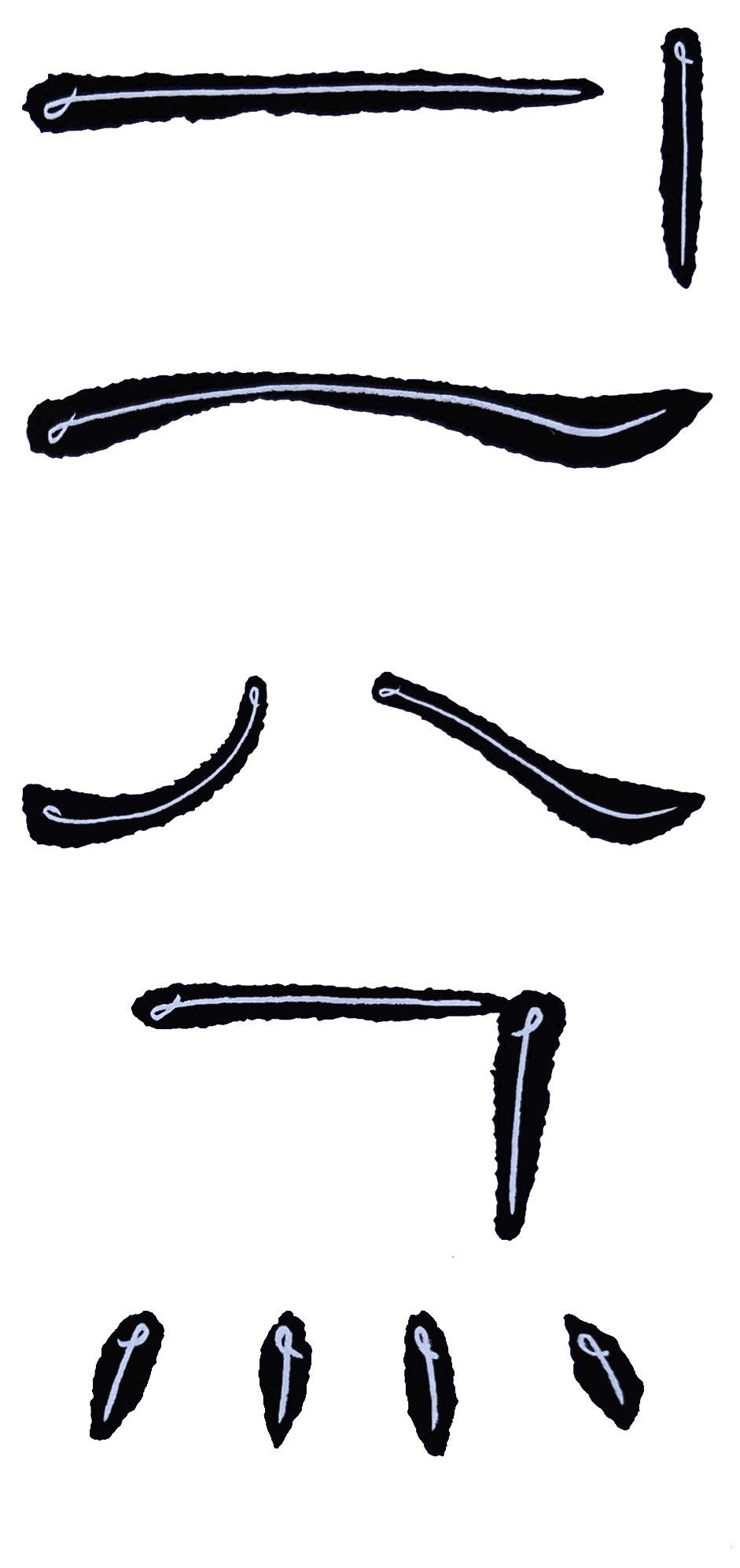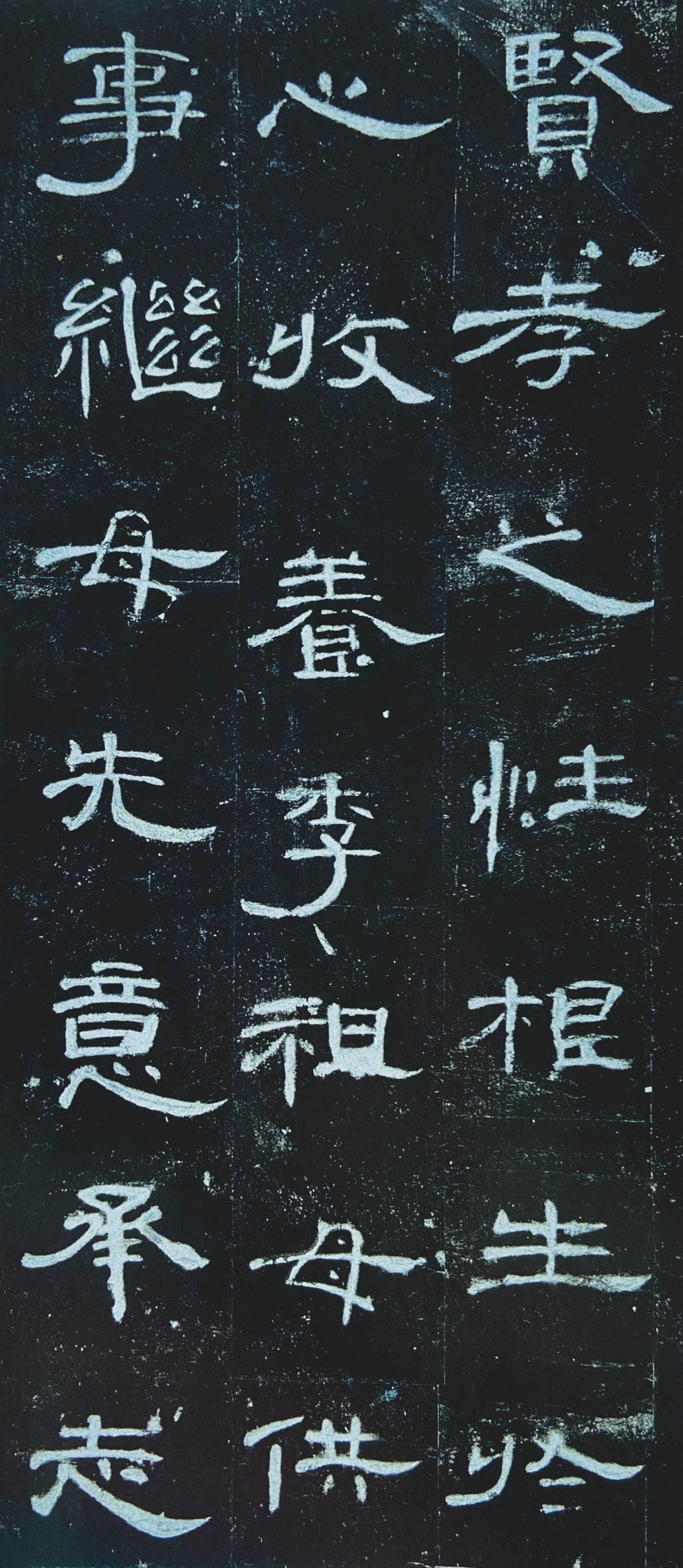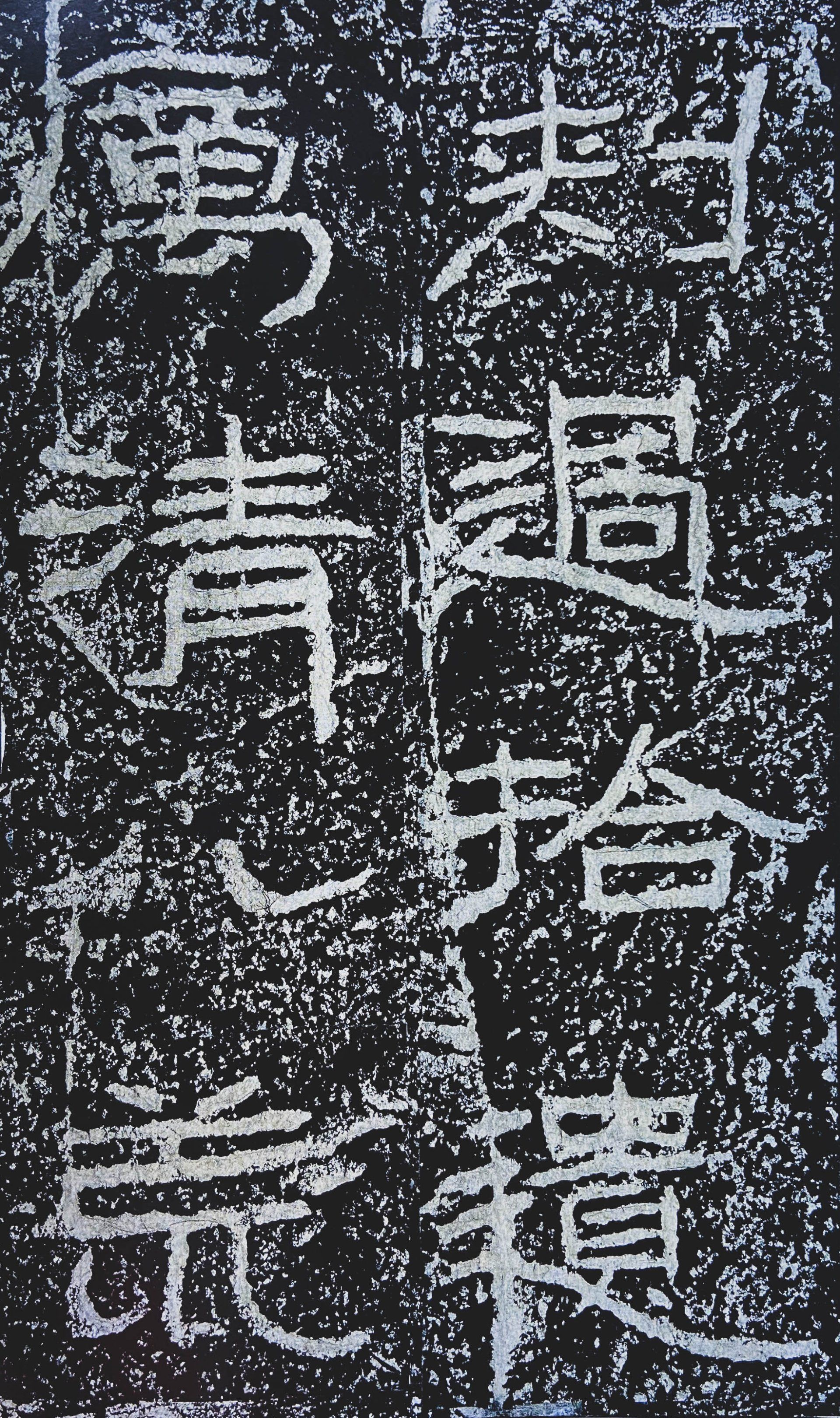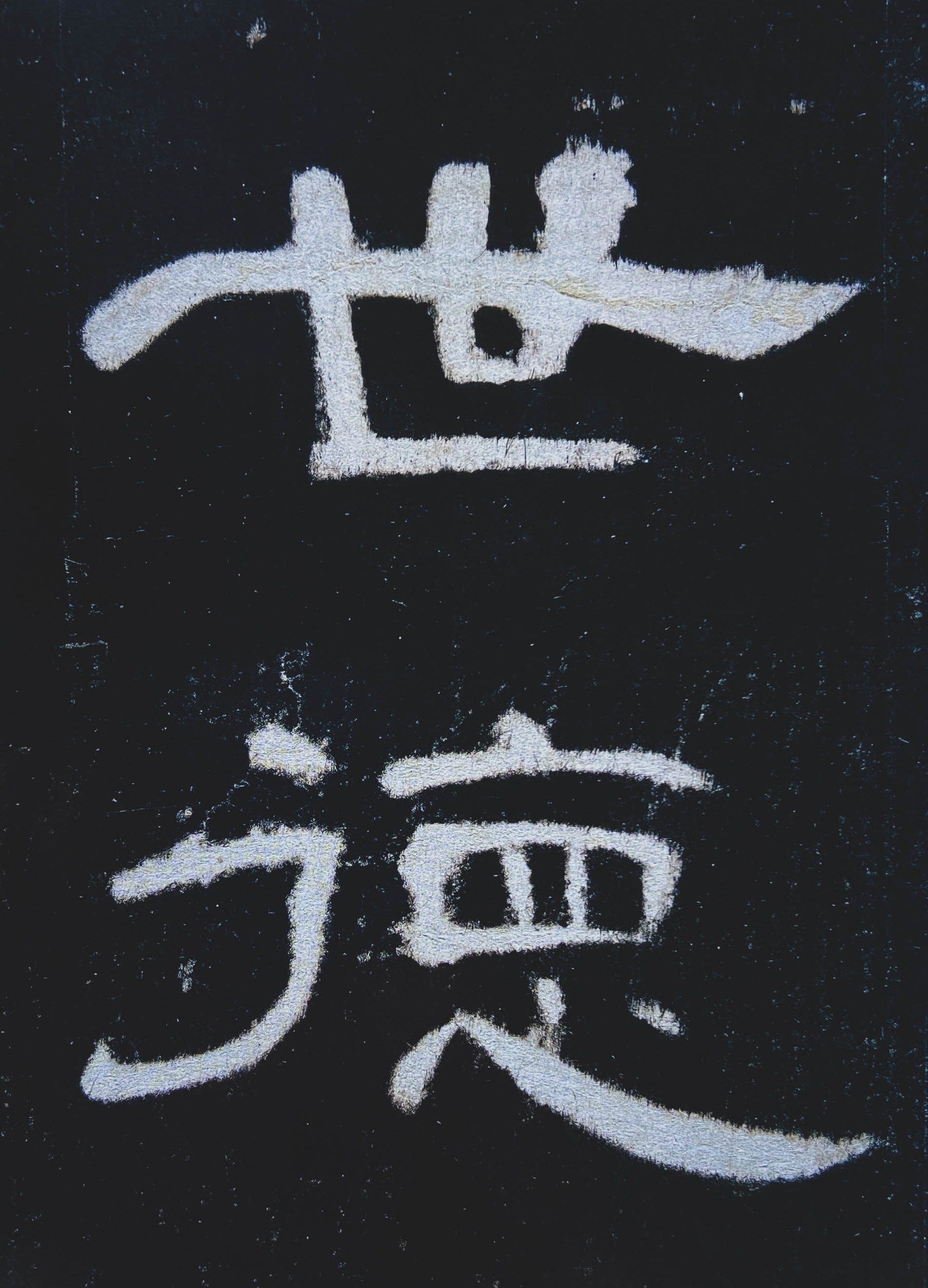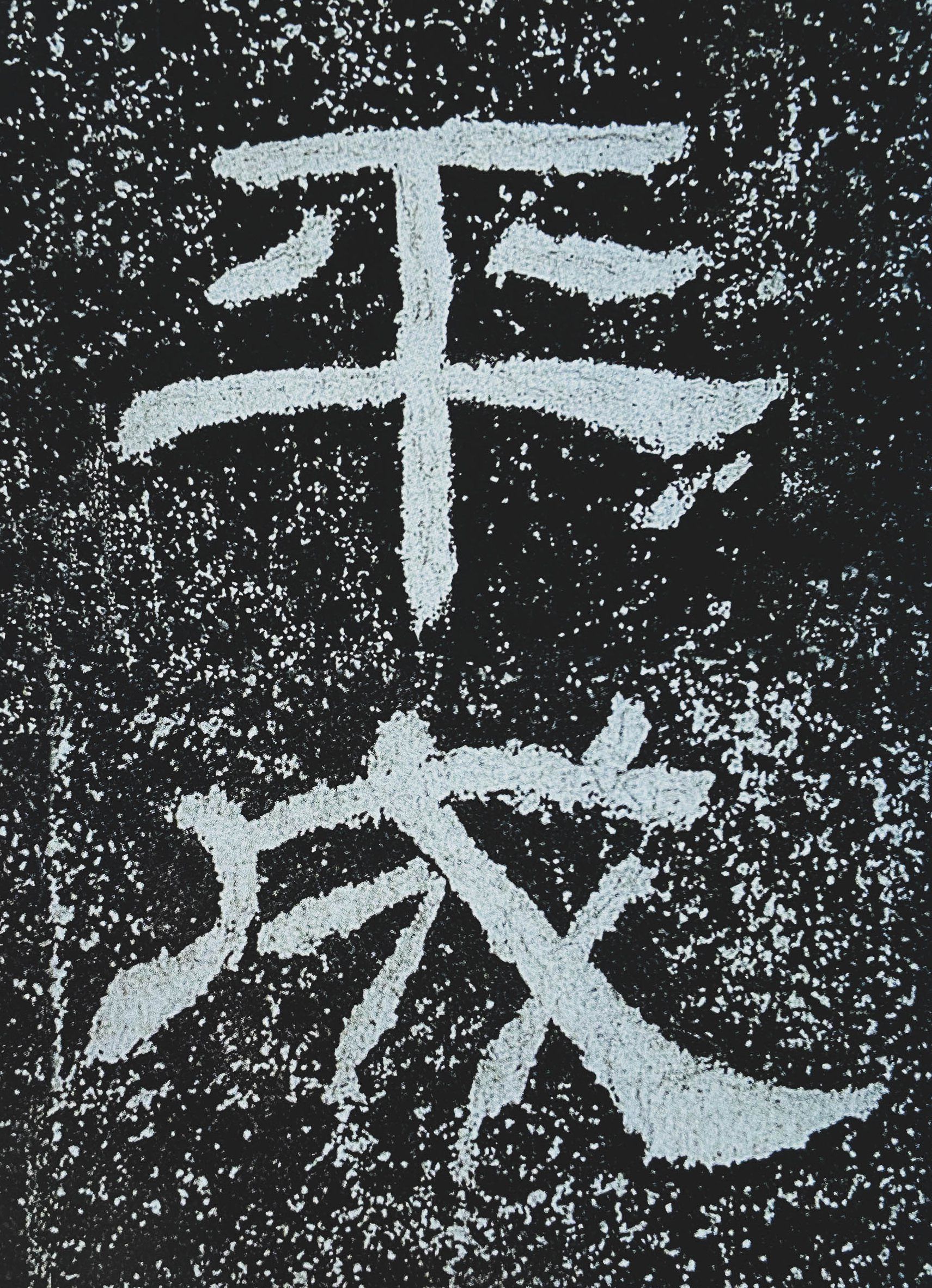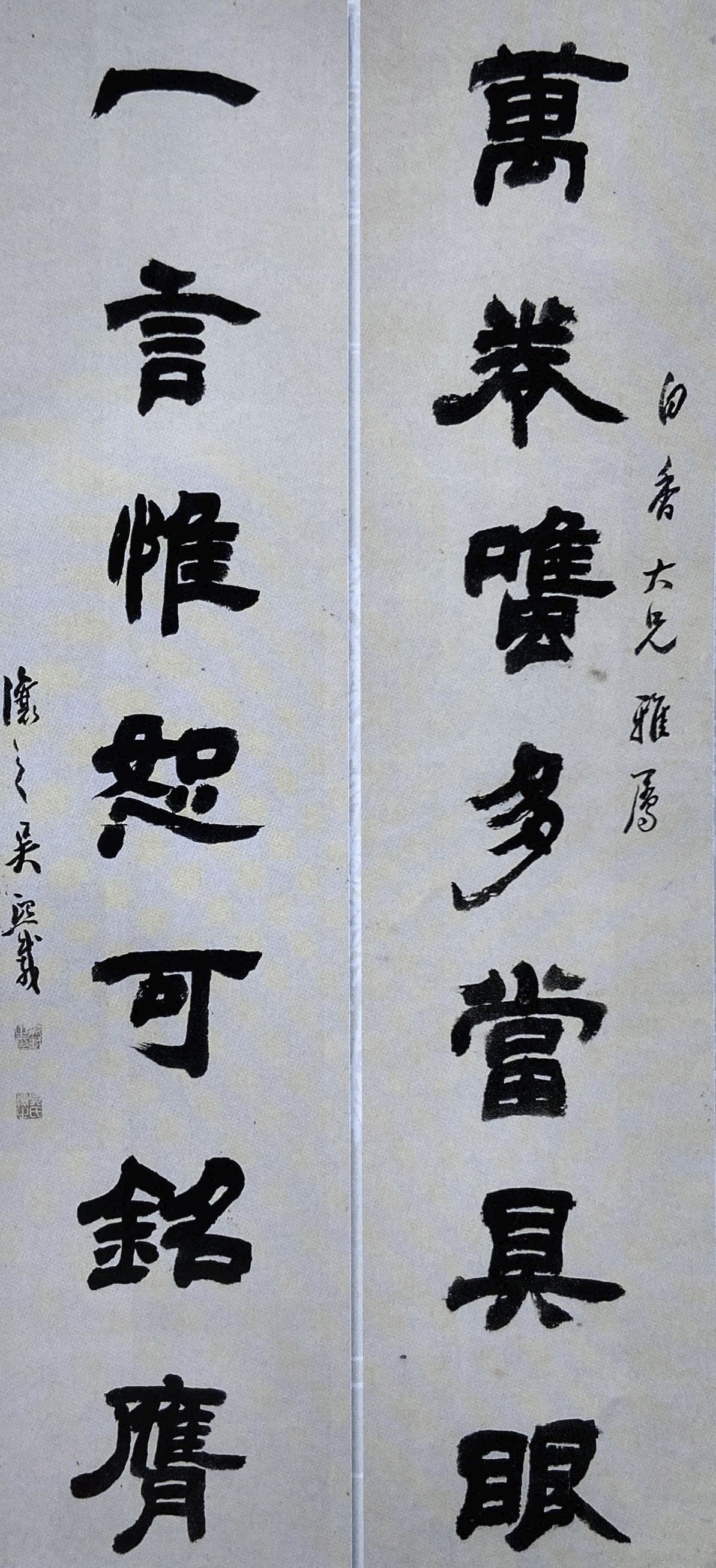Reisho 隷書 or writing of the scribes
The beginnings of the Reisho 隷書 style can be found on small bamboo strips or Mokkan 木簡 during the Warring States Period (475-221 BC). At the end of this period, several circumstances made it possible for this type of writing to become official. On the one hand, the growing need for written communication forced the simplification of the characters in the small seal style, on the other hand, the invention of paper and the improvement of writing tools such as the brush, made this new style hegemonic at the same time as making it possible for the cultural field of ancient China to become more sophisticated. The kanji Rei 隷 means “slave” but also refers to “small official”, which is why historians believe that it was the lower classes, such as officials, who initiated the use of this type of writing. Two fundamental features differentiate Reisho from the previous Tensho 篆書 style. The first of these refers to the variation in the thickness of the strokes resulting from the change in pressure with the brush - something that also adds rhythm to the writing - and on the other hand, they go from being vertical characters to horizontal characters. Another very significant issue is the use of a brush technique called Gyakunyuu Heishutsu 逆入平出 (trans. “reverse entry, calm exit”) by which the entry of the brush is reversed by hiding the tip before continuing the stroke in its natural direction, making the beginning have a rounded appearance. In many of his horizontal strokes, the end of the stroke becomes fatter, drawing it calmly, lowering the brush before jumping towards the end, something that in Japanese is known as Santou Gan-o 蠶頭雁尾 (“the head of a silkworm and the tail of a chicken”). These technical issues, of invaluable subtlety, make it also become one of our study styles in our classes. Due to its solemn, elegant and highly legible appearance, this style is still used for ornamental purposes and also for personal seals. Text written by Elena Hikari



